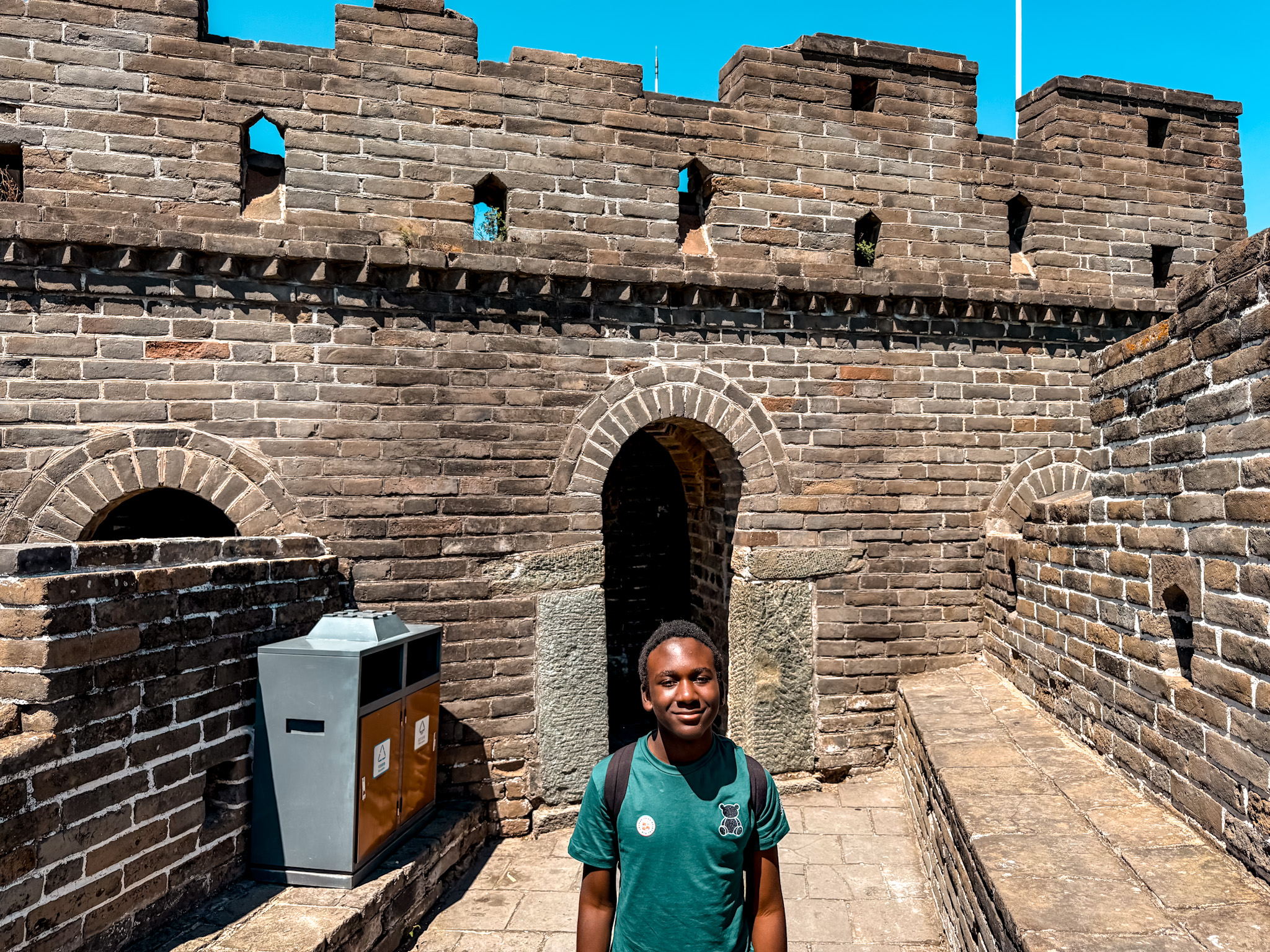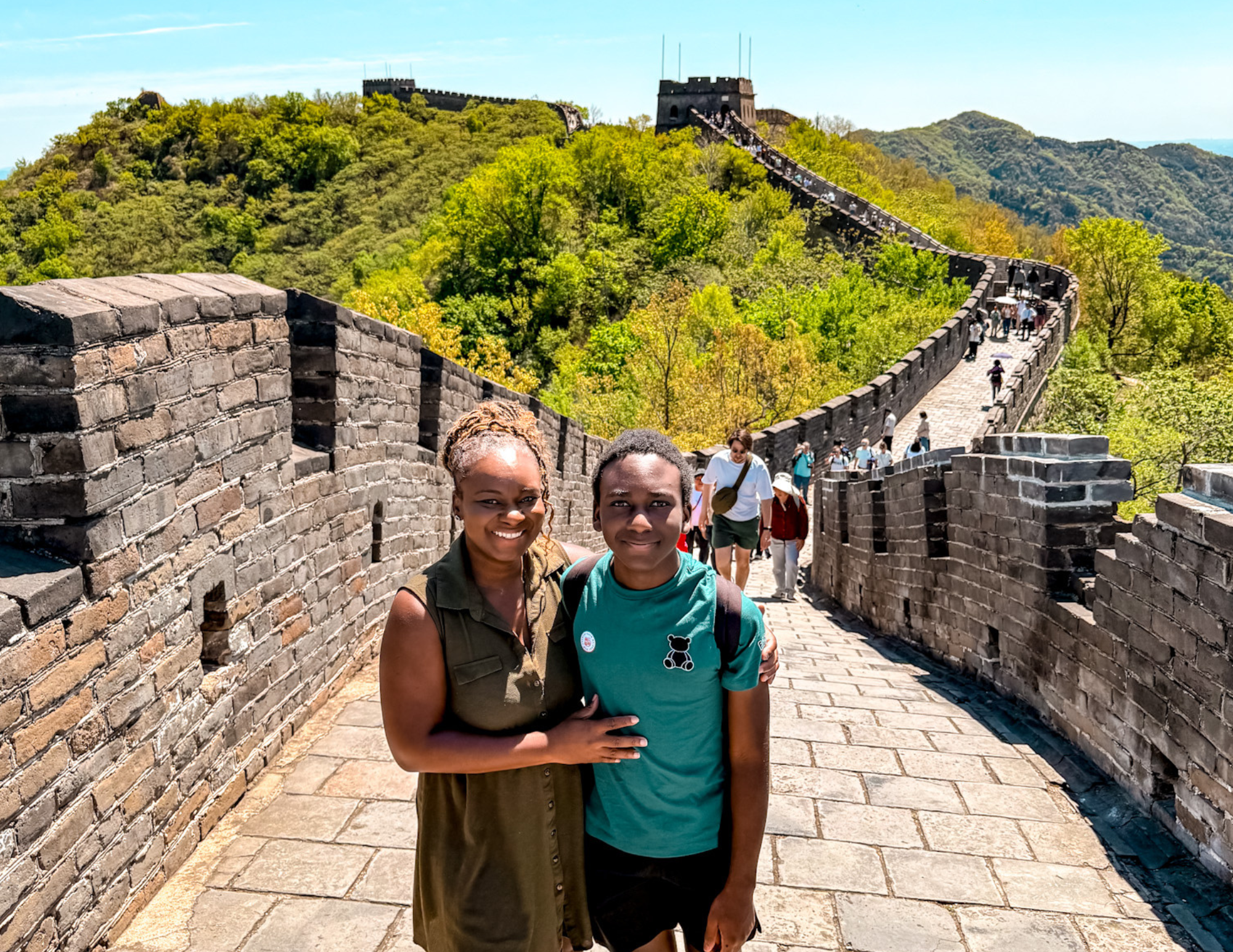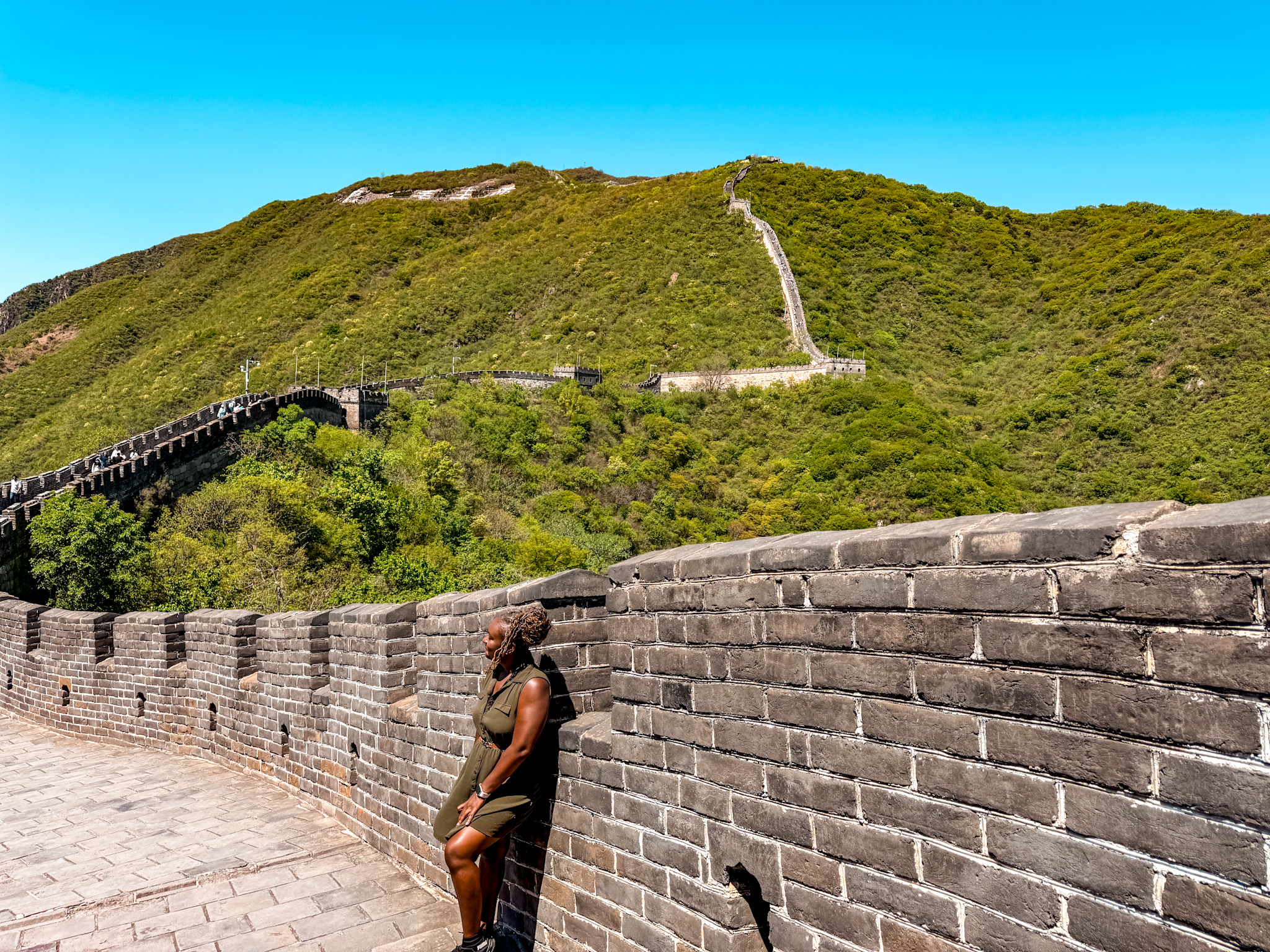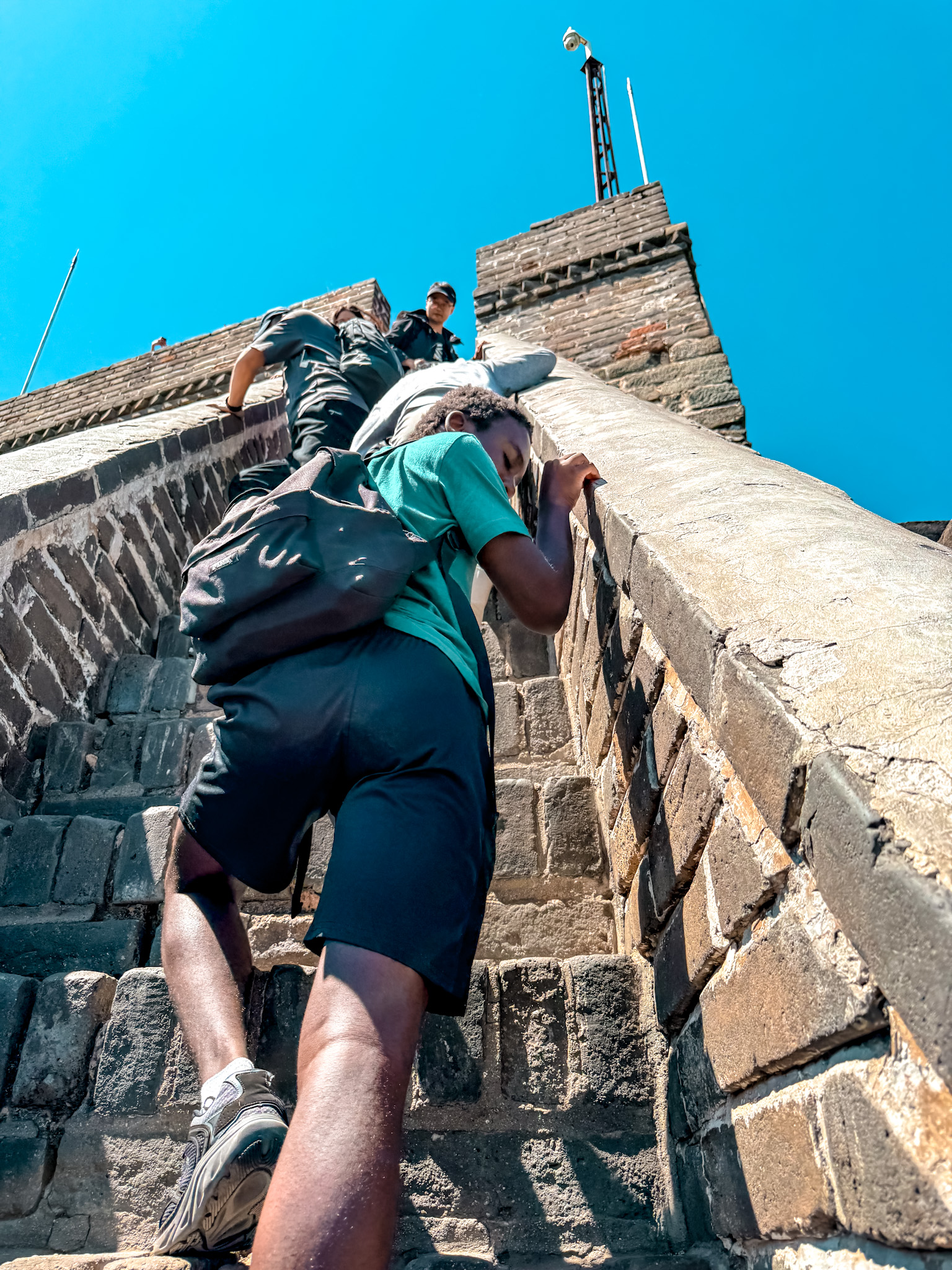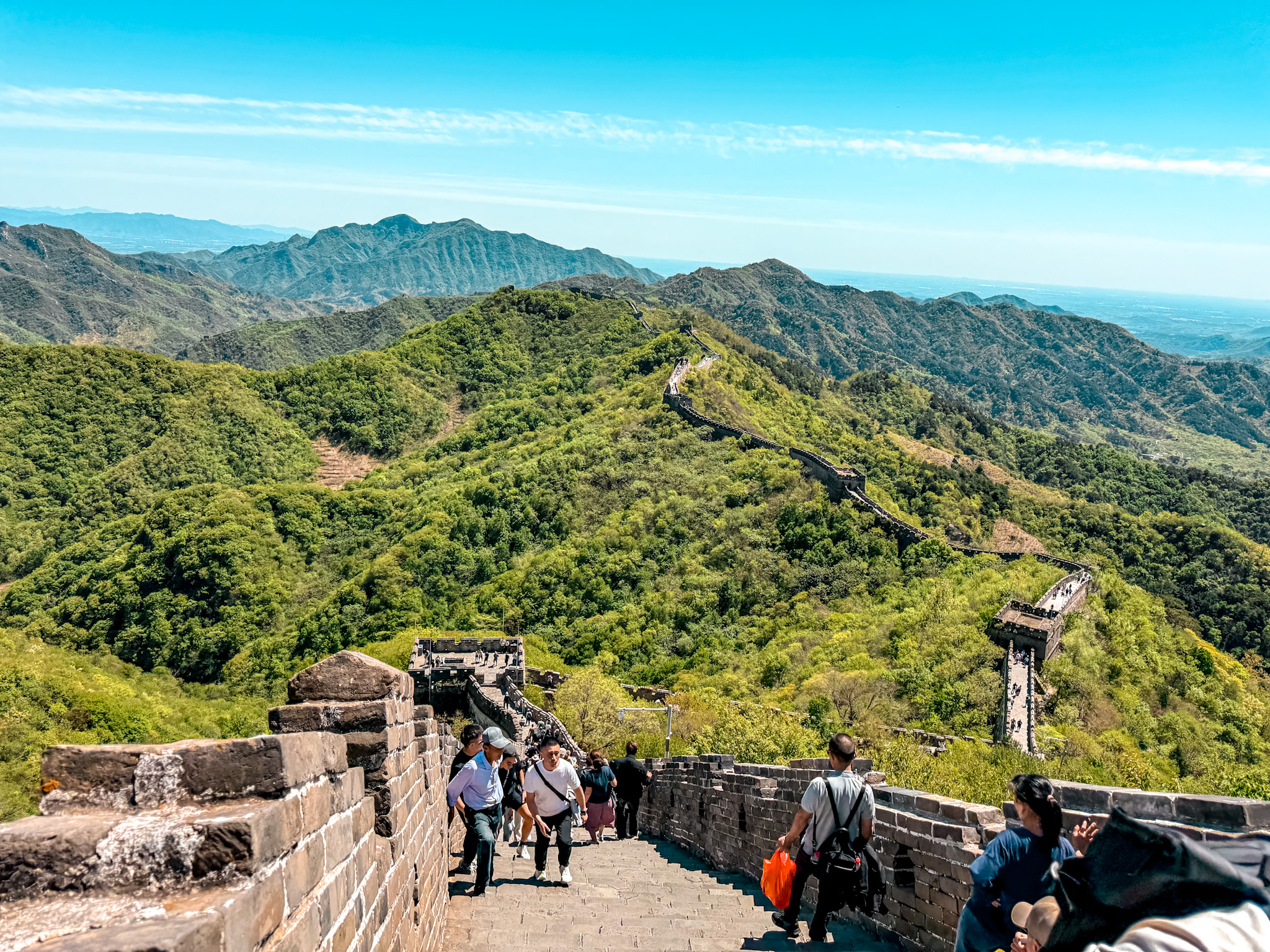The Great Wall of China is one of the most enduring symbols of Chinese history, ingenuity, and resilience. Stretching across more than 21,000 kilometers (13,000 miles), it winds its way through deserts, grasslands, and mountains — built over many centuries to protect Chinese states from nomadic invasions and later serving as a symbol of national unity.
Today, visiting the Wall is one of the most iconic and memorable experiences for travelers in China. There are several accessible sections from Beijing, each offering something different. Here’s a detailed guide on how to visit the Great Wall, with a focus on the Mutianyu and Badaling sections — including history, logistics, and firsthand tips from our own trip.
A Brief History of the Great Wall
Construction of various walls began as early as the 7th century BCE, but the sections most travelers see today date back to the Ming Dynasty (1368–1644). During this period, the wall was extensively rebuilt, fortified with stone and brick, and expanded to serve as a military defense line. Watchtowers, barracks, and signaling systems were also added.
Despite popular belief, the Wall didn’t function as an impenetrable fortress. Instead, it acted as a psychological and physical barrier, slowing down invaders and symbolizing strength and sovereignty. In modern times, it stands as a UNESCO World Heritage Site and a testament to China’s historical endurance.
Choosing Your Section: Mutianyu vs. Badaling
Two of the most popular sections near Beijing are Mutianyu and Badaling. Both have pros and cons, depending on your travel goals, time, and preference for crowds or solitude.
Mutianyu
-
Less crowded: Popular, but not overwhelmingly so.
-
Well-preserved: This section was rebuilt in the 1980s and features both restored and wild areas.
-
Scenic: Surrounded by dense forests and rolling hills.
-
Modern access: Offers cable cars, chairlifts, and toboggan rides.
-
More physically challenging: Steep inclines and uneven steps.
Best for: Travelers who want a quieter, more natural and immersive experience.
Badaling
-
Most popular section: Very busy, especially with large domestic tour groups.
-
Most accessible: Closest to Beijing and easiest for families or those with mobility issues.
-
Fully restored: Smooth walking paths and railings, ideal for a more leisurely visit.
-
Easier climb: Gentler slopes, although there are still some steep areas.
Best for: First-time visitors, families with kids, or travelers looking for convenience and accessibility.
How We Visited Mutianyu — What to Expect
We chose Mutianyu for a more scenic, less crowded experience. We booked a group tour the night before through Trip.com, which included:
-
Round-trip transportation from a central Beijing metro station
-
Entrance ticket to the Wall
-
Shuttle bus from the parking lot to the gate
-
Cable car ride up and down
The total cost was about $30 per person, which is excellent value considering the logistics. The tour was smooth, organized, and exactly as described.
Bring your passport — it is required to scan for entry and ticket redemption.
Climbing the Wall: What It’s Really Like
From the entrance, a shuttle bus takes you to the cable car base. The cable car is highly recommended — it saves you from a long, steep climb and gets you straight to the scenic part of the wall.
Once you’re up there, you can explore in either direction. Some towers are closely spaced, while others involve steep climbs and descents. The terrain is rugged and the stone steps are worn, making for a challenging but rewarding hike. Take your time, rest when needed, and soak in the views.
On the wall itself, you’ll find a few vendors selling bottled water, beer, and snacks, but the prices are steep (up to 5x the city rate). These vendors haul everything up manually, so it’s understandable, but you’re better off bringing your own supplies.
At the Base: Food and Refreshments
After returning via cable car and shuttle, there’s a small commercial area at the bottom where you can grab food and drinks. Options include:
-
Mixu: A popular drink chain for smoothies and iced tea
-
Pizza Hut: Localized with unique toppings and menu items
-
Starbucks: Offers a familiar stop for coffee and snacks
Keep in mind that prices are slightly elevated due to the location, but there’s plenty of variety to satisfy most cravings.
Time Commitment
Visiting the Great Wall is a full-day outing, especially if you're using group transportation. Even though Mutianyu is only 1.5–2 hours from Beijing, the combination of travel, logistics, walking the wall, and grabbing food afterward will leave you exhausted.
It’s best to keep the rest of your day open or loosely planned — maybe just a nice dinner in Beijing. Don’t expect to add on other major attractions unless you go independently.
Going on Your Own: Pros and Cons
If you prefer a more flexible day, you can also hire a private driver or take a Didi (China’s version of Uber). This option lets you:
-
Set your own schedule
-
Skip group pickup delays
-
Add more stops to your itinerary, like a local village or hot springs
The trade-off is slightly higher cost and needing to coordinate logistics yourself — including entrance tickets, cable car passes, and shuttle rides.
Final Tips and Reminders
-
Passport required for all entry and ticket scans
-
Wear sturdy shoes and weather-appropriate clothing
-
Bring water, snacks, and sun protection
-
Don’t underestimate the physical effort — the wall is steep in places
-
Book ahead if you’re traveling in peak season or with a larger group
Is It Worth Visiting?
Absolutely. Whether you choose Mutianyu for a scenic, quiet experience or Badaling for its accessibility and ease, the Great Wall is one of the world’s most remarkable achievements. Walking along it — feeling the history beneath your feet — is something no photo can fully capture. It’s a moment of perspective, both literal and figurative.
If you're planning your trip and need help deciding which section to visit or how to organize your day, feel free to reach out or drop questions below. I’m happy to share more insight based on our experience.
